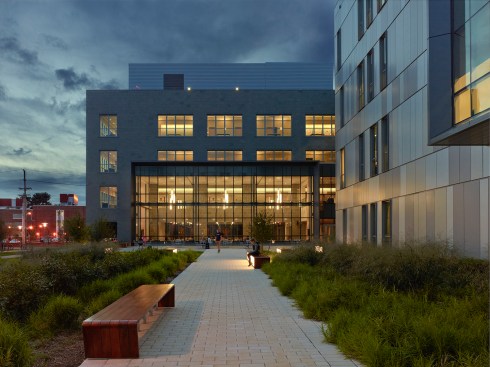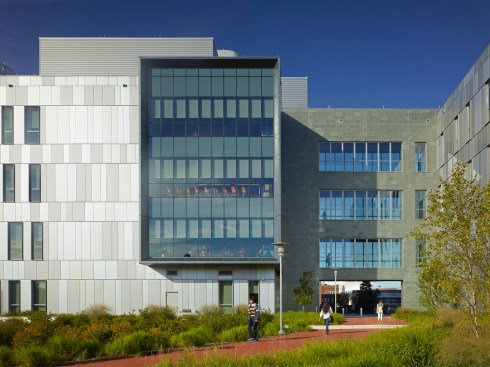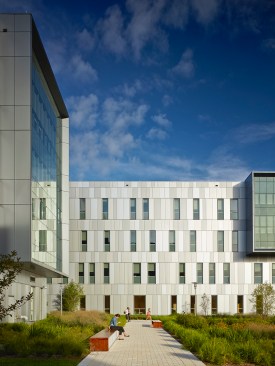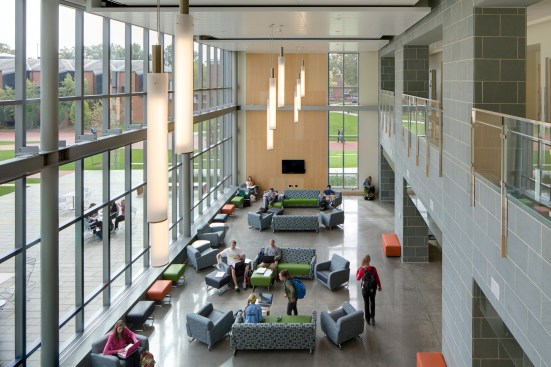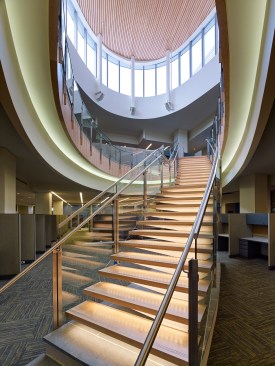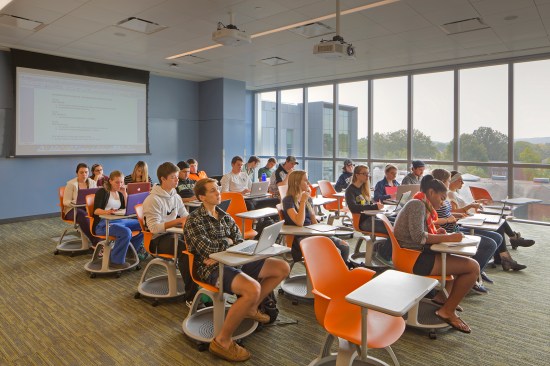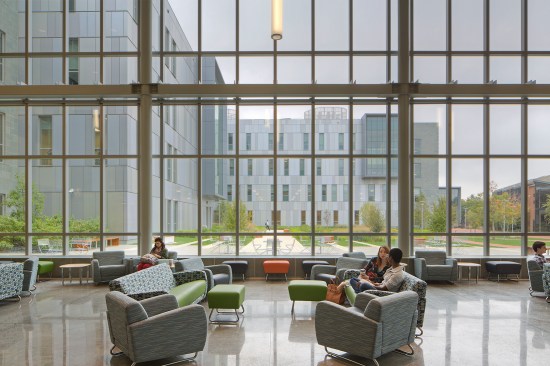Project Description
FROM AIA MARYLAND:
The University of Delaware’s new science building, the
Interdisciplinary Science and Engineering Laboratory (ISE Lab) accommodates
undergraduate teaching lab space for the arts and sciences, specifically the
natural sciences (physics, chemistry, biology) and general registrar
classrooms. In addition, the building houses state-of-the-art engineering
research labs and core facilities serving the University’s research endeavors.
The University’s vision for the project was to create a place that embraces a
commitment to teaching, learning, and research and fosters collaboration,
stimulating a passion for science discovery among students, faculty, staff, and
alumni. Thus creating a literal “Path to Prominence” to meet the institutional
goal of promoting collaborative interdisciplinary research through shared
support, open labs, and core facilities. Programming for ISE Lab considered
successful pedagogical models for delivery of problem based science education
developed and refined at the university. Unrestrained by the conventional silos
of the core science disciplines, the framework for the new interdisciplinary
curriculum used the PBL format in conjunction with highly flexible
instructional labs. This new technology-rich lab-PBL classroom module formed
the underpinning of the new interdisciplinary curriculum and informed the
layout of the building. In lieu of
traditional lab, lecture and discussion format, students in this new curriculum
are to meet once a day for two hours a five days a week to fulfill the
requisite contact hours. The building is organized into two components;
instruction and research, both connected via bridge. The instructional building
houses PBL classrooms, registrar classrooms, lab and lab support spaces,
Faculty offices, breakout spaces, commons, and food service. The instructional
wing contains Institute offices, research labs, Advanced Materials
Characterization Lab, Synthesis lab, microscopy/imaging suites, and a 9,000 SF class
100 clean room. The building is designed to contribute to a vibrant streetscape
and pedestrian realm facilitating movement to and thru the site connecting the
main campus core to the developing east campus. The buildings outward
expression uses materials and fenestration patterns to connect it to older
campus buildings while other materials express the exploration of modern
science and transparency. Strategically located to capture movement thru the
site, the commons is a campus-wide destination for students, faculty and staff
to congregate, collaborate, and study. The building forms a ’U’ shape, framing
a south facing plaza. This plaza
provides exterior gathering space for students and formal events. Stormwater management
is visibly expressed through the buildings green roofs, runnels, pre-treatment
planters, and bio-retention plantings.
Jury quote: "A great addition to the University of Delaware through the
beautiful integration of the landscape and architecture that creates a new sense
of place."
